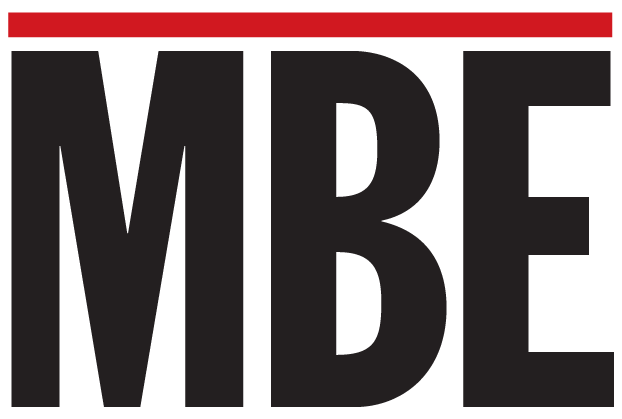
Business development is an important element of a business’s operations, especially for small and medium-sized business. Many times, the business owner is wearing too many hats and doesn’t prioritize designing and implementing a clear system for the leadership team, as well as for the operational side.
On the leadership side, they can be searching for business in the wrong place, bypassing potential opportunities, or communicating the wrong message.
If the bidding team does not have specific procedures in place, their response to an RFP or RFQ can lack the winning elements necessary or just be deceiving.
It is important to have a marketing strategy. It is also significant to have a clear sales goal. And it’s equally vital not only to have a business development plan, but to make sure everyone on the team is familiar with the goals and are part of the process.
In order to successfully compete for and secure contract opportunities, there are several components that must be included in business development planning.
- Have clear business development strategy. Is your business strategy to work with the government or to work with prime contractors on government projects? Identify your target market. Do you want to sell to your clients directly or would you prefer to do it using other channels, such as being part of a cooperative? You can build a list of potential clients, but once you research them, you may change your mind.
Here are some questions you need to answer before choosing a potential client: Their past projects
Do they work with one big contractor or do they work with different subcontractors and what category will you be in?
Are their payment terms 30, 60, 90, or over 120 days?
Will you take credit card payments?
Would you be able to have a Master Service Agreement (MSA), Blanket Purchase Agreement (BPA), Indefinite Delivery Indefinite Quantity (IDIQ) in place?
Does your business have the cash flow to handle those terms?
What projects are in their short term/long term pipeline? Are these local projects city/ county/state?
What are their needs for current projects?
What are their needs for upcoming projects?
Make sure you know who to target: the government agency or the prime contractor?
Will you be a second- or a third-tier contractor?
Have they previously worked with businesses like yours (size, budget, location)?
Learn about their historic spend and their partnership with small and medium business: Do they have a mentor-protégé program? Do they have a “meet the buyer program”? Would you consider participating in a joint venture or other type of partnership agreement? - If the bid is out, you are too late. For government agencies and corporations, the bidding process is long and is just the tip of the iceberg. At that point, a long “behind-the-scenes process” has been taking place, for at least a year. When possible, try to be involved from the beginning or at least as earliest as possible. Know your buyers and make sure they know you. Do not reach out for the first time when you want to win the contract and you need them. Reach out before they need you and build a relationship with them. Be accessible. It may take a few months (or a year) before they consider you.
- Designate a bidding specialist. Business owners wearing many hats also, often, do the bidding process. They lack a checks and balances system. It is necessary that you build a “professional bidding team” and make sure they “speak the same language” as your potential clients and that they use the right channel to communicate. This will allow you to be the extra pair of eyes checking your response to the RFP or the invitation to bid.
Make sure you invest in your bidding team. Keep your communication process open and keep clear your “value proposition” in each occasion. Your differentiator may be the difference for winning or not. If you do not have the resources for an in-house team, consider outsourcing the services. They are many options in the market that specialize in different industries. If you do, make sure they are part of your team and a non-compete policy is in place. - Show Up. Be there. Express your intent to bid. Even if you don’t qualify for the bid, or if the opportunity is a NO-GO for whatever reason, talk to them and let them know. They will keep that information in mind for the future.
- Be Visible. No cold calling. You can not magically appear from “nowhere” in front of them and ask them to give you a contract. They need references, they need to see your work, and verify your level of competitiveness and performance. You can:
Submit a Capability Statement
Register in all of the Vendor Databases
Promote your business in electronic catalogs
Actively promote on social media
Keep your website updated with business accomplishments, recognitions you get, goals, and achievements. Include information as well as other visual resources, such as photos or videos of recently completed customer’s testimonials. Also, include other valuable information, like certifications and team members. - Be in compliance before you reach out. Make sure you cross your “T’s” and dot your “I’s.” Is your company in good standing with your Secretary of State? Is your insurance covering what they need? Is your company bonded for the right amount of money? Do you have a qualify team? Is the team in place? Do you have the cash flow or the access to capital to handle the project?
- Start Small. Make a small project and make it 110 percent better than expected.
- Have a checks and balances system in place. Keep the communications channel open with your your potential and current clients and be ready to pivot, if necessary. Projects don’t necessarily go as planned. There could always be more opportunities for you and your business. Be ready to step in and do your best performance. Be a Problem Solver. Become their HERO.
- Repeat.













